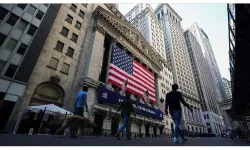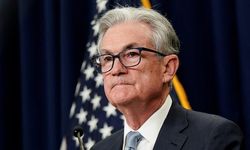Large US corporations, known as Corporate America, are over-borrowing, ignoring warnings from the Fed and Jerome Powell.
Although the recent rise in bond yields cooled the market for a short while, the pace of borrowing appears to be accelerating.
Executives are not getting the Fed's message
As Bloomberg's Olivia Raimonde reports, for the past 18 months, Fed Chairman Jerome Powell has been frantically trying to break Americans' borrowing and spending habits because it's critical to the Fed's fight against inflation. But senior executives, CEOs and CFOs across the country are not getting the message.
Not only is corporate America showing little appetite to pay down debt that has become more expensive after 11 rate hikes, but many are piling more on their books by borrowing cash from bond markets to improve operations, expand their businesses and raise funds.
Since the first rate hike in early 2022, investment-grade companies such as Pfizer and Meta, which have played an ever-growing role in driving the US economy, have added more than half a trillion dollars in net debt, according to data compiled by Bloomberg Intelligence. Even companies with weaker finances, those rated below investment grade, are increasing their debt again this year after rescaling in 2022.
According to Edward Altman, professor emeritus of finance at New York University's Stern School of Business, this is a reflection of how ingrained the pattern of borrowing and spending has become in Corporate America during a two-decade period when Fed policymakers pegged benchmark interest rates near zero.
A habit from the years of making easy money
Many of today's balance sheet managers started their careers in the easy money years, and Altman says that makes it even harder to break out of that mindset. "For them, it's 'Corporate Finance 101,'" Altman says.
While all the buzz on Wall Street is that the Fed's rate hike campaign is essentially over, the debt boom signals that Powell may need to keep interest rates higher to curb this behavior. The rise in benchmark 10-year bond yields over the past two weeks, which has cooled the pressure to sell debt for now, is a sign that investors may now be waking up to this reality.
Risks and bankruptcies
The risk, of course, is that Powell goes too far and plunges the economy into a 'recession', felt most acutely by debt-ridden companies. According to BI data, indicators of the financial health of investment grade companies have entered a deterioration phase. Between the end of March 2022 and mid-2023, leverage ratios increased while a key indicator of their ability to pay, known as interest coverage, declined, the data show.
For less creditworthy businesses, this tension increases faster. In some corners of speculative-grade debt markets, such as real estate and retail, defaults are on the rise. Well-known companies such as Bed Bath & Beyond and Party City are among more than 150 companies filing for bankruptcy this year that owe at least $50 million, according to data compiled by Bloomberg.
The urge to borrow continues
While extremely rare, corporate turmoil is possible, even among investment grade companies. Silicon Valley Bank's failure in March after a rise in interest rates triggered an influx of deposits is a good example.
Given the extreme nature of the borrowing frenzy over the past 10 years, Hans Mikkelsen, managing director of credit strategy at TD Securities, says it is likely that further meltdowns are lurking in normally safe corners of the market, adding: "Things have to explode. Years of loose monetary policy meant that 'the amount of risk-taking was excessive'."
The corporate borrowing spree of the past 18 months appears to have been mostly a North American phenomenon. Investment borrowers in Europe have added a relatively much smaller amount of net debt over that time, at $150 billion, according to BI data. In Asia, net borrowing has fallen by about $70 billion.
It is true that the Fed has had some success in reining in American spending in certain sectors of the economy. This can be seen in the decline in the leveraged loan market, which finances mergers and acquisitions, and the decline in mortgages and other consumer loans. But overall, the impulse to borrow shows little sign of wavering. The rise in long-term bond yields over the last couple of months has been a
Corporate America is over-borrowing!
Corporate America ignores the Fed and Fed Chairman Jerome Powell and continues to borrow.
Editor: Albert Owen
Trending news

Snoop Dogg to carry the Olympic torch

Lily James Expresses Admiration for Hailey Bieber’s Rhode Skincare Line

Taylor Tomlinson Will Explore Her Faith and Sexuality on Tour!

'Alien mummy' in Peru raises eyebrows

Scandal in the heart of Europe: Child abuse in a church!

Kamala Harris’ Running Mate: Here’s Who Could Be Her VP After Biden Drops Out And Endorses Her










